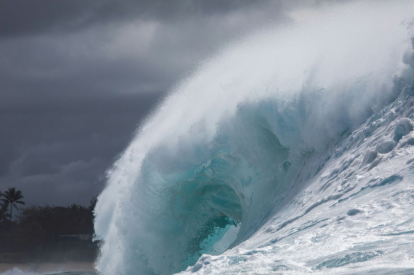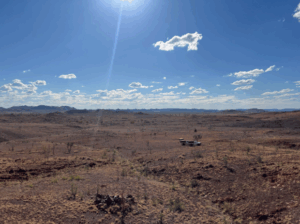The sound of waves crashing is known to be soothing, but wave power can provide more than relaxation.
Wave energy has the potential to leverage the sway of the ocean and strength of the swell to generate electricity for towns and cities.
But the technology designed to harness this power is still in the early stages.
RIDE THE WAVE
Wave energy is created through the up-and-down motion of the ocean. This movement is captured by wave energy converters, which turn it into electricity before it is fed into power grids.
There are different types of wave energy converters, including a floating buoy, a partially submersible device and an underwater structure that can be mounted on the seabed.
But harnessing the ocean has its challenges. The corrosive nature of saltwater and physical force of waves hamper efforts to advance this technology past the prototype stage.
Caption: The up-and-down motion of ocean waves is harnessed to generate electricity
Credit: Photoholgic via Unsplash
In WA, one of these technologies is being tested as part of the Albany M4 Wave Energy Demonstration Project, delivered by UWA, Blue Economy Cooperative Research Centre and the WA Government.
A floating device was recently deployed into Albany’s King George Sound with the goal of demonstrating the feasibility of wave energy as a renewable power source.
CURRENT OF CHANGE
While this technology is still being tested, scientists believe wave energy will be critical to achieve the nation’s net-zero targets.
Australia has the largest and most consistent wave energy resource in the world, located along the southern coastline.
Caption: The world’s largest wave energy resource is located on Australia’s southern coastline
Credit: Matt Hardy via Unsplash
This natural resource has the potential to generate nearly five times the nation’s energy requirements each year.
Some researchers believe wave energy could advance rapidly enough to provide up to 11% of Australia’s energy by 2050.
But the power produced by the ocean is not the only form of energy generated by water in Australia.
WHEN IT RAINS, IT POWERS
Hydropower makes up more than 18% of the nation’s total generated renewable energy, third only to solar and wind power.
Hydropower is created when water from rivers, streams or reservoirs is funnelled through water turbines, pushing the blades as it flows through the system, which generates electricity.
Caption: Hydropower generates up to 18% of Australia’s renewable energy
Credit: Dan Meyers via Unsplash
There are more than 120 operating hydroelectric power stations around Australia, mainly in New South Wales and Tasmania where rainfall and land elevation is highest.
The problem with hydropower is that it requires rainfall to generate energy, which can be difficult in a country as dry as Australia.
Luckily for us, Australia is an island – surrounded by an ocean that is on track to be the next renewable energy power source.









